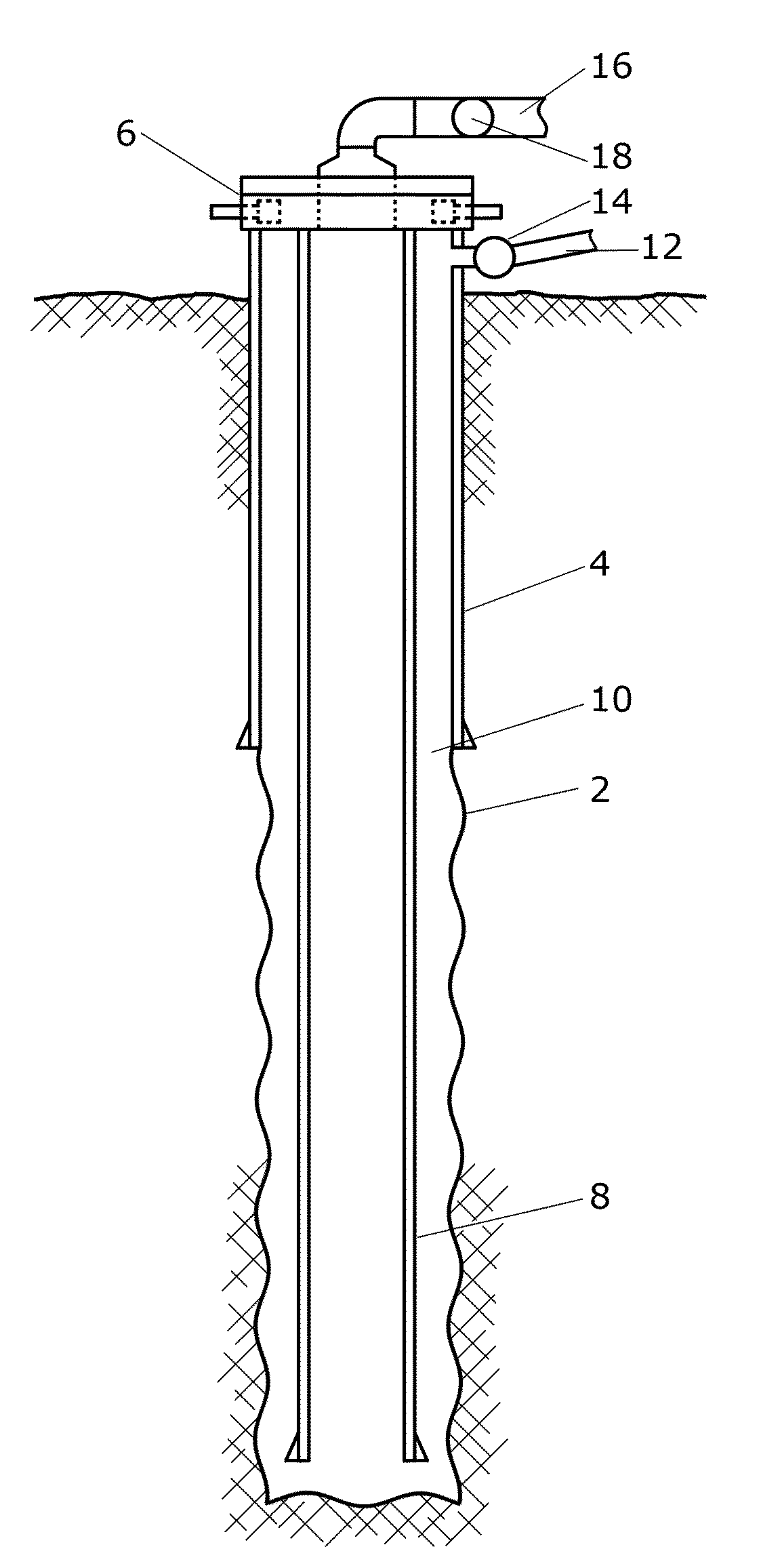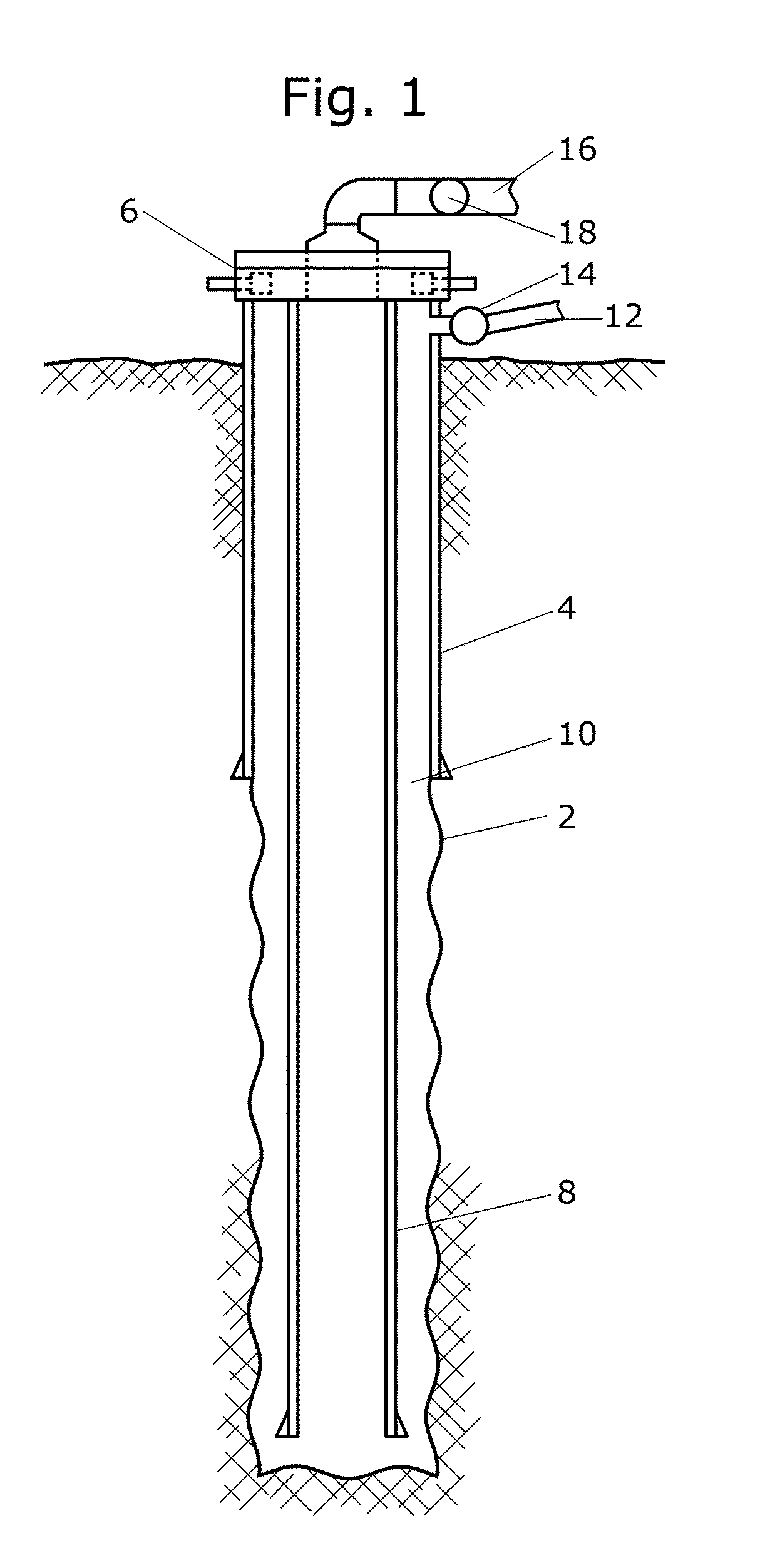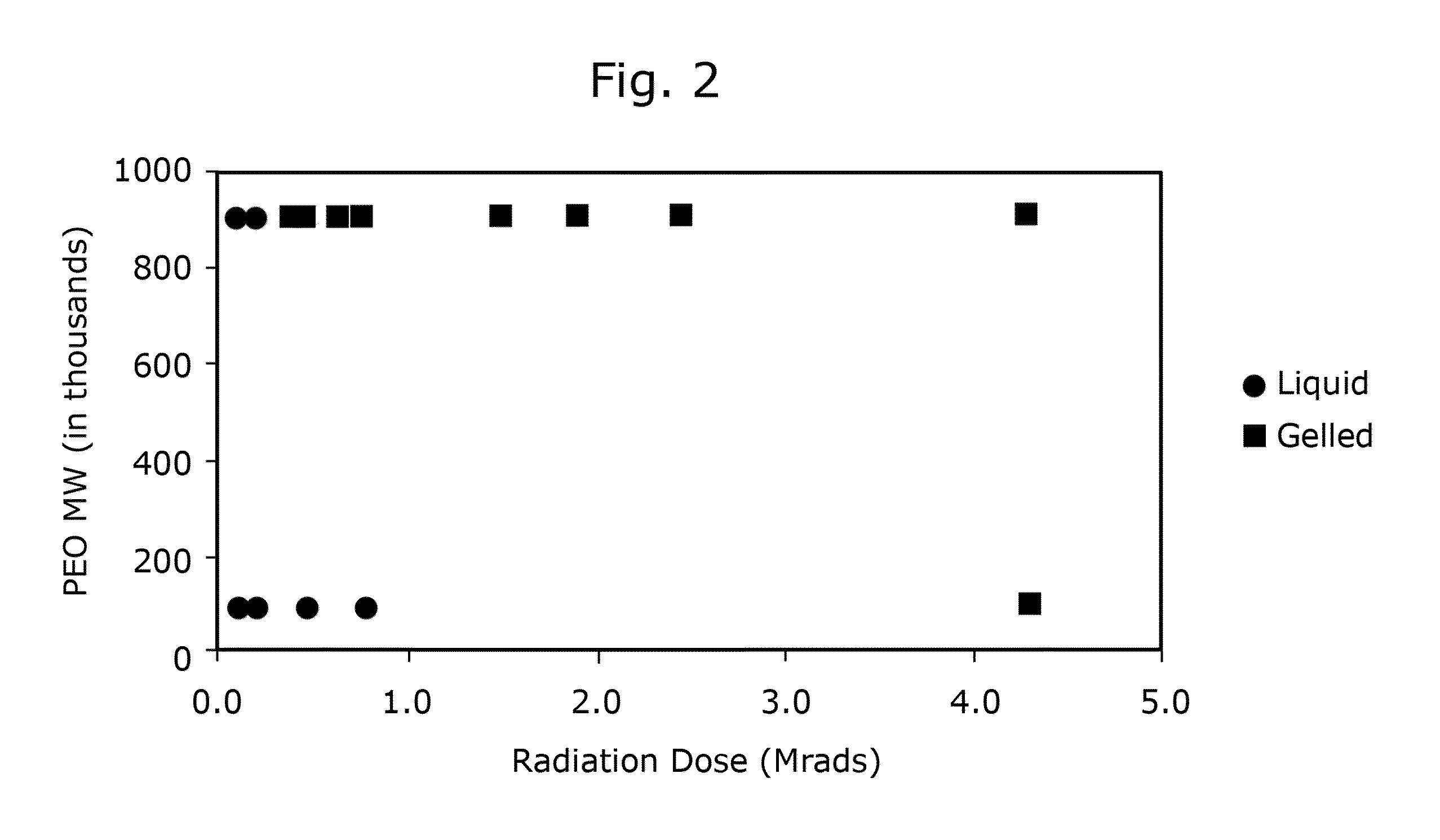Radiation-Induced Thickening for Set-On-Command Sealant Compositions and Methods of Use
- Summary
- Abstract
- Description
- Claims
- Application Information
AI Technical Summary
Benefits of technology
Problems solved by technology
Method used
Image
Examples
example 1
[0067]800 grams of a Class H cement was mixed with 320 mL of water (to give a water-to-cement, w / c, ratio of 0.40) and 0.5% bwoc of a 900,000 MW PEO (polyethylene oxide) to form a slurry. The slurry also contained 0.50% bwoc maltrodextrin, a cement set retarder. The slurry was mixed for 45 seconds in a Waring blade mixer at high shear. The slurry was split into two samples. One sample was exposed to 4.3 Mrads of gamma radiation exposure from a Co-60 source while the other was kept as the control. The control sample, that was not irradiated was still fluid (yield point measured at 3.5 Pa) whereas the gamma-irradiated sample had cross-linked and was totally solid.
example 2
[0068]Several slurries were prepared using a Class H cement, water (to give a water-to-cement, w / c, ratio of 0.40) with two different PEOs (100,000 MW and 900,000 MW). Other components in the slurries were a polycarboxylate ether (dispersant), Diutan gum (viscosity modifier) and maltodextrin (retarder). The mix-designs for the slurries are given in Table 1.
TABLE 1Mix designs for the slurries used in cross-linking experiments.Mix DesignMIX #1MIX #2MIX #3MIX #4MIX #5MIX #6Cementgrams800800800800800800watergrams316.4316.4320320320320Retarder (Maltodextrin)grams444444Dispersant NameADVA 575ADVA 575Melflux 1641Melflux 1641Melflux 2651Melflux 2651Disperant Total Solids0.400.401.001.001.001.00Dispersantgrams662.42.42.42.4VMA (Diutan Gum)grams3.23.23.23.23.23.2PEO MW100,000900,000100,000900,000100,000900,000PEOgrams444444
[0069]All of the slurries were exposed to 4.3 Mrads of gamma radiation from a Co-60 source and were found to cross-link and gel on exposure to gamma radiation non-radiated ...
example 3
[0070]800 grams of a Class H cement was mixed with 320 mL of water (w / c=0.40) and 0.5% bwoc of a 360,000 MW poly (vinyl pyrrolidone) to form a slurry. The slurry also contained 0.50% bwoc maltrodextrin, a cement set retarder. The slurry was mixed for 45 seconds in a Waring blade mixer at high shear. The slurry was split into two samples. One sample was exposed to 4.3 Mrads of gamma radiation exposure from a Co-60 source while the other was kept as the control. The control sample that was not irradiated was still fluid, with a yield point measured at 150 Pa, whereas the gamma-irradiated sample had cross-linked and was totally solid.
PUM
| Property | Measurement | Unit |
|---|---|---|
| Percent by mass | aaaaa | aaaaa |
| Fraction | aaaaa | aaaaa |
| Fraction | aaaaa | aaaaa |
Abstract
Description
Claims
Application Information
 Login to View More
Login to View More - R&D
- Intellectual Property
- Life Sciences
- Materials
- Tech Scout
- Unparalleled Data Quality
- Higher Quality Content
- 60% Fewer Hallucinations
Browse by: Latest US Patents, China's latest patents, Technical Efficacy Thesaurus, Application Domain, Technology Topic, Popular Technical Reports.
© 2025 PatSnap. All rights reserved.Legal|Privacy policy|Modern Slavery Act Transparency Statement|Sitemap|About US| Contact US: help@patsnap.com



